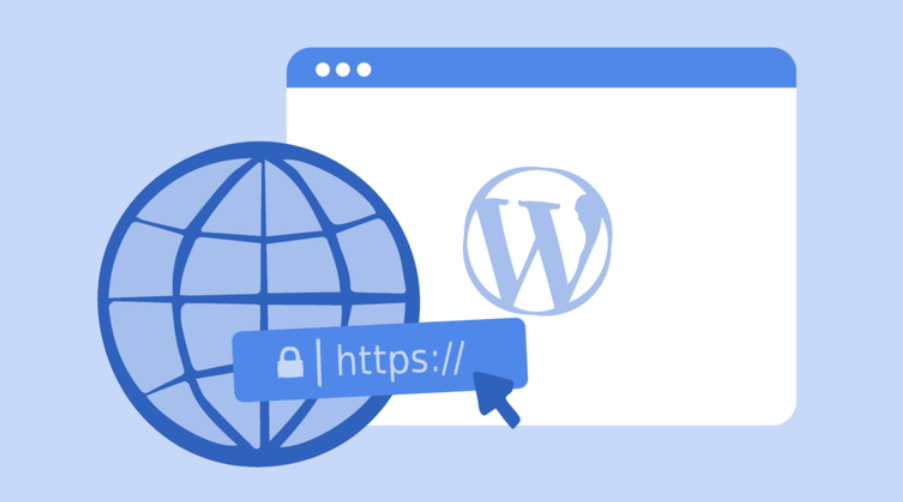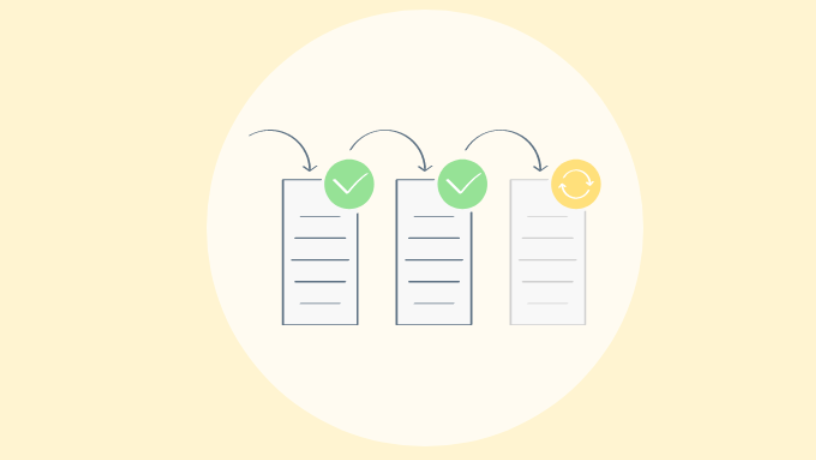Are you considering migrating your WordPress site from one domain to another? If you are still a new blogger or have little understanding of using WordPress, perhaps, it may prove to be difficult or complex to change the URL of your WordPress site but when you are using the right tools, it should not be a problem. Just sit back and let us take you on a tour of the world of migration and here we will also explain to you one of the most crucial steps of WordPress migration, that is – URL change.
Understanding the Basics of WordPress Migration
Delving into WordPress migration, it’s pivotal to grasp its fundamental concept. At its core, migration encapsulates the movement of your site’s entirety—from content and database to settings and configurations—to a new domain or hosting environment. This process, driven by various motivations like rebranding efforts, domain changes, or hosting provider shifts, is more than a URL adjustment.
It involves a comprehensive transfer, ensuring your site’s functionality remains intact in its new residence. A WordPress migration involves significant planning and strict principles targeted at utilizing special instruments to enhance the migration process. Knowing that migration is a process rather than a single activity paves the way for a discussion of the activities that are progressively involved in the process, starting from preparation to the post-migration adjustments, as they are vital in ensuring that your site is not compromised during the migration process.
Pre-Migration Checklist for a Smooth Transition
Before embarking on the journey of migrating your WordPress site, compiling a comprehensive pre-migration checklist is essential for a hassle-free transition. To make the moving process less stressful, it can be helpful to have this list as a checklist to guarantee all these important things will not be overlooked. You first need to back up your entire website, which will include all your files, databases, and contents, to prevent any data loss if the situation worsens.
Next, ensure that all plugins and themes are not only updated but also compatible with the new domain to avoid any functionality issues post-migration. It’s also prudent to review and clean up your website’s database, removing outdated or unnecessary data that could complicate the migration.
Additionally, inform your audience about the upcoming changes; clear communication can help manage expectations and reduce confusion during the transition period. Ending, ensuring that you have the permissions for both the previous and the new hosting platforms and ensuring that you possess the rights for managing the domain configurations gives you the necessary background to switch from one host to another without problems. It is necessary to approach each of these preparatory steps in a structured manner, which will help to reduce potential difficulties, thus creating favorable conditions for site relocation.
Changing the URL: Step-by-Step Guide
Embarking on the URL change involves a meticulous process within your WordPress dashboard. Here’s a concise, step-by-step walkthrough to navigate this crucial stage:
- Begin by accessing your WordPress dashboard, the control hub for your site’s operations.
- Navigate to the ‘Settings’ menu and select ‘General’. Here, you’ll find two critical fields: ‘WordPress Address (URL)’ and ‘Site Address (URL)’.
- Carefully input the new domain name into both fields, ensuring accuracy and avoiding disruptions to your site’s accessibility.
- After confirming the new domain details, proceed to ‘Save changes’. This action updates your site’s core address settings to reflect the new URL.
It’s imperative to follow these steps precisely to ensure a smooth transition to your site’s new domain. This, on its own, only starts the URL change process: More things must be done to migrate the URLs fully, for instance, updating URLs in the database and putting the right redirections by which links’ integrity and search engine rankings will not be lost.
Updating Database References to the New Domain
Once you’ve modified the URL settings within your WordPress dashboard, the subsequent pivotal step is to align your website’s database with the new domain. This involves meticulously updating all instances where the old domain is referenced within your database, ensuring every link, image, and media file seamlessly integrates with your site’s new address.
Employing a database management tool like phpMyAdmin is a common approach, allowing for a direct and comprehensive update process. The basic option would be the plugins, such as Velvet Blues Update URLs or Better Search Replace, which are more easily interpretable by users. It is advisable to back up your database before undertaking this exercise.
Still, with these plugins, it is possible to replace all the instances of the old domain with the new domain in your entire database without much effort. It’s crucial during this phase to execute with precision, as inaccuracies can lead to broken links or inaccessible content, impeding the user experience on your migrated WordPress site. This update solidifies the foundation of your site’s transition, ensuring all internal mechanisms point towards its new digital locale.
Redirecting Traffic from the Old Domain
Redirecting traffic effectively is crucial when you’ve transitioned to a new domain. The objective is to guide visitors and search engines from your old site URL to the new one without a hitch. Implementing a 301 redirect is critical in this case as it informs the respective search engines that the site has shifted permanently, thereby passing any links to the new site. To implement a 301 redirect, you need to edit your .htaccess file located in the root directory of your old site. Here’s how:
- Access your site’s root directory through your FTP client or cPanel’s File Manager.
- Look for the .htaccess file. Before making any changes, create a backup of this file to avoid potential issues.
- Open the .htaccess file and insert the following lines at the top:
RewriteCond %{HTTP_HOST} ^olddomain.com [NC,OR]
RewriteCond %{HTTP_HOST} ^www.olddomain.com [NC]
RewriteRule ^(.*)$ http://newdomain.com/$1 [L,R=301,NC]
Replace “olddomain.com” with your old domain name and “newdomain.com” with your new domain. This code tells web browsers and search engine crawlers that your site’s content has moved to a new URL and that they should redirect any traffic and link equity accordingly.
This redirection not only assists in retaining your existing audience but also plays a significant role in preserving your search engine rankings during the transition period.
Post-Migration Steps to Ensure Stability
Once your WordPress site is comfortably settled into its new domain, it’s crucial to execute a series of post-migration checks to safeguard its stability. Initiate this phase by meticulously testing every link and function across the site to uncover any potential issues that might have arisen during the migration. This includes verifying that all internal and external links lead to the correct pages and that forms, plugins, and interactive elements operate as expected.
Additionally, refreshing your site’s sitemap and submitting it to major search engines will aid in quickly re-indexing your content under its new URL. Keep a vigilant eye on your site’s performance and search engine rankings during the initial weeks following the migration.
Using website analytics like Google Analytics and Google Search Console can, therefore, prove useful as it can inform about many traffic changes and which pages could have higher bounce rates or have decreased rankings. These steps are also beneficial as they contribute greatly to enhancing the functionality of your site and creating a splendid responsive user experience in addition to search engine optimization following your migration.
Common Migration Challenges and How to Overcome Them
Navigating through the migration process, it’s common to face obstacles such as broken links, lost media files, or incompatible plugins. These challenges, while frustrating, are not insurmountable. For broken links and missing images, employing tools like Broken Link Checker or performing a manual audit can be effective in identifying and fixing these issues. Ensuring all media files are correctly referenced in the new domain is crucial; this may involve batch updating file paths using plugins designed for search and replace functions within your database.
Plugin conflicts often emerge during migrations due to differences in server configurations or PHP versions. Deactivating all plugins before migrating and then reactivating them one by one on the new domain allows you to identify the culprit and decide whether an update or replacement is necessary.
Additionally, unexpected challenges may arise with theme compatibility. If your theme appears broken or functions improperly post-migration, consulting theme documentation or support forums can guide adjustments or updates needed to achieve full functionality.
For more complex issues or if you find yourself out of your depth, leveraging the WordPress community support forums or hiring a professional with migration experience can provide the expertise needed to navigate these hurdles efficiently. As such, its proactive approach to address migration challenges helps to lessen the impact of transition on your new domain. Thus, it helps to reduce any inconvenience to your site’s operations and users’ experience.
Conclusion: Embracing Your New Digital Home
Navigating the journey to a new domain for your WordPress site might initially be a formidable challenge. However, armed with the comprehensive guide we’ve explored, the path becomes less intimidating and entirely manageable. You are transferring from one scheme to another requires careful planning. Avoid rushing through the process, taking each step slowly and ensuring that all is done as planned.
When you have transitioned into a new administrative domain, all the efforts that you have used result in the possibility of a new ground with a new look, awaiting growth and development. This will also contribute to improving more frequent maintenance and what you should know about the updated WordPress site. Happy blogging and wishing you a fantastic journey ahead Congratulations on the lovely new home you coming up in cyberspace.


